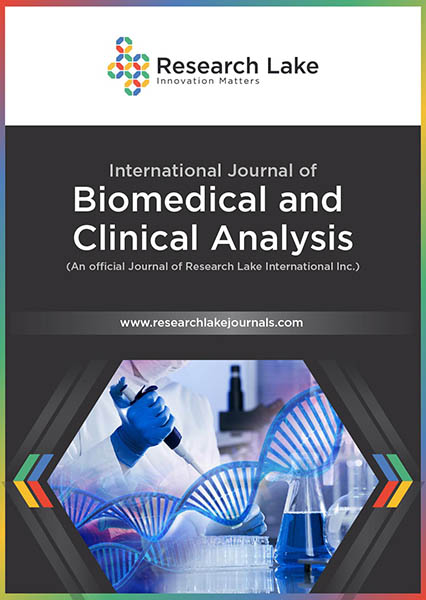Toxicity Evaluation of Silver Nanoparticle in the Kidneys of Wistar Rats
Abstract
This study aimed to evaluate the nephrotoxic effects of silver nanoparticles (AgNPs) in Wistar rats using biochemical, oxidative stress and histopathological changes. Three groups of six rats were orally administered AgNPs once a day for 28 days with doses of 100, 500, 1000 mg/kg bodyweight. A control group was administered with deionized water. Blood and kidneys were collected 24 h after the last treatment following standard protocols. The activities of creatinine and blood urea nitrogen against AgNP-induced toxicity was determined in the serum by colorimetric microplate assay. Various activity levels of oxidative stress including, Catalase (CAT), Superoxide dismutase (SOD), Glutathione peroxidase (GPx) and Lipid hydroperoxides (LPO) were evaluated in the kidney tissue. Scanning (SEM) and transmission electron microscopy (TEM) was used to determine the histopathological evaluation of the kidneys. A significant increase in the levels of serum creatinine, blood urea nitrogen, CAT and LPO, were noted in AgNPs exposed rats compared to that in control rats. In contrast, decreased activities of SOD and GPx in a dose-dependent manner was observed in AgNPs exposed rats relative to control rats. SEM and TEM study showed significant morphological alterations in kidneys of AgNPs exposed rats in accordance with the biochemical markers. The results of the study demonstrate that AgNPs might be nephrotoxic, and its toxicity is mediated through oxidative stress mechanism.
Copyright (c) 2023 Anita K. Patlolla, S. Anitha Kumari, Zada Lusk

This work is licensed under a Creative Commons Attribution-NonCommercial 4.0 International License.
Copyright © by the authors; licensee Research Lake International Inc., Canada. This open-access article is distributed under the terms of the Creative Commons Attribution Non-Commercial License (CC BY-NC) (http://creative-commons.org/licenses/by-nc/4.0/).






















